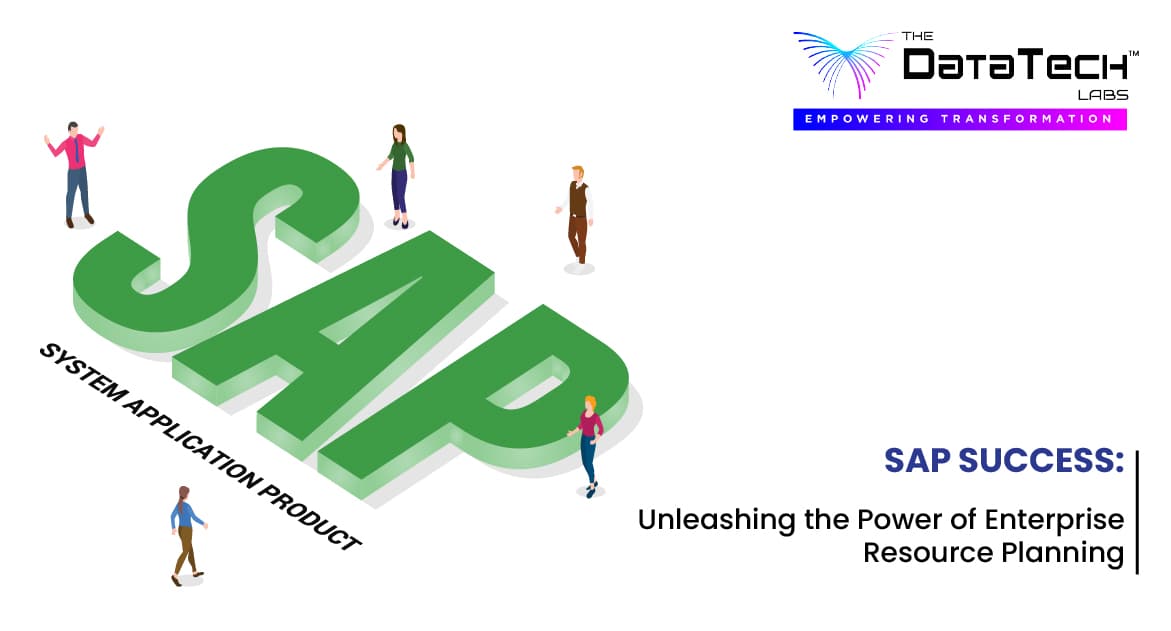Introduction
In the modern business landscape, efficiency, integration, and data-driven decision-making are paramount. Enterprise Resource Planning (ERP) systems, particularly SAP, have emerged as critical tools for achieving these objectives. This article explores the power of SAP ERP, how it contributes to business success, and practical steps for its implementation.
What is SAP ERP?
Overview of SAP ERP
SAP (Systems, Applications, and Products in Data Processing) is one of the world’s leading providers of ERP solutions. SAP ERP integrates various business processes, including finance, HR, procurement, and supply chain management, into a single system, enabling seamless operations and real-time data access.
Key Features of SAP ERP
- Integration: Centralizes data and processes across departments.
- Real-Time Analytics: Provides real-time insights and reporting.
- Scalability: Adapts to the needs of both small businesses and large enterprises.
- Flexibility: Supports various industries with customizable modules.
Benefits of Implementing SAP ERP
Enhanced Operational Efficiency
SAP ERP automates routine tasks, streamlines processes, and reduces manual errors. This leads to significant improvements in productivity and efficiency.
Improved Data Management
Centralized data management ensures that all departments have access to accurate, up-to-date information, facilitating better decision-making and strategic planning.
Greater Financial Control
With integrated financial management tools, SAP ERP provides comprehensive oversight of financial operations, from accounting to budgeting, ensuring compliance and financial health.
Better Customer Service
By integrating customer relationship management (CRM) with other business processes, SAP ERP enhances customer service through improved order processing, delivery, and after-sales support.
Increased Agility
SAP ERP allows businesses to quickly adapt to market changes and new opportunities by providing flexible and scalable solutions.
Steps to Successful SAP ERP Implementation
- Conduct a Needs Assessment
Identify the specific needs and challenges of your business that SAP ERP can address. This involves analyzing current processes and pinpointing areas for improvement. - Secure Executive Buy-In
Ensure that top management understands the benefits of SAP ERP and is committed to supporting the implementation process. Executive sponsorship is crucial for securing resources and driving organizational change. - Develop a Comprehensive Implementation Plan
Create a detailed plan outlining the scope, timeline, budget, and key milestones of the SAP ERP implementation. This plan should also identify potential risks and mitigation strategies. - Choose the Right Implementation Partner
Select a reputable SAP implementation partner with a proven track record. An experienced partner can provide valuable insights, best practices, and technical expertise. - Train Your Team
Invest in comprehensive training programs for your employees to ensure they are proficient in using SAP ERP. Proper training is essential for maximizing the system’s benefits and ensuring user adoption. - Monitor and Optimize
Regularly monitor the performance of your SAP ERP system and make necessary adjustments to optimize its effectiveness. Continuous improvement is key to achieving long-term success.
Real-World Examples of SAP Success
Example 1: Improved Supply Chain Management
A global manufacturing company implemented SAP ERP to integrate its supply chain operations. As a result, the company achieved real-time visibility into inventory levels, reduced lead times, and improved supplier collaboration, leading to a 20% increase in operational efficiency.
Example 2: Enhanced Financial Reporting
A multinational corporation used SAP ERP to centralize its financial data. This integration allowed for real-time financial reporting and analysis, significantly improving the accuracy and speed of financial decision-making.
Example 3: Better Customer Relationship Management
A retail company integrated its CRM with SAP ERP, resulting in a unified view of customer interactions. This integration enabled personalized marketing campaigns and improved customer service, leading to a 15% increase in customer satisfaction.
Challenges in SAP ERP Implementation
Resistance to Change
Implementing SAP ERP often requires significant changes to existing processes, which can meet resistance from employees. Effective change management strategies are essential to overcome this challenge.
High Costs
The cost of SAP ERP implementation can be substantial, including software licenses, hardware, and training expenses. Businesses must carefully budget and plan to ensure a return on investment.
Data Migration
Migrating data from legacy systems to SAP ERP can be complex and time-consuming. Ensuring data accuracy and integrity during this process is critical.
Customization
While SAP ERP is highly customizable, excessive customization can lead to increased complexity and maintenance challenges. Balancing customization with standardization is important.
Future Trends in SAP ERP
Integration with Emerging Technologies
SAP is continually evolving to integrate with emerging technologies such as artificial intelligence (AI), machine learning, and the Internet of Things (IoT). These integrations will further enhance the capabilities of SAP ERP systems.
Cloud-Based ERP Solutions
The shift towards cloud-based ERP solutions is accelerating, offering businesses greater flexibility, scalability, and cost savings. SAP’s cloud offerings provide robust ERP functionalities without the need for extensive on-premises infrastructure.
Enhanced User Experience
Future SAP ERP systems will focus on improving user experience through intuitive interfaces, mobile accessibility, and advanced analytics, making it easier for users to interact with the system and derive value from it.
Conclusion
Embrace the Power of SAP ERP
SAP ERP is a powerful tool that can transform business operations, enhance efficiency, and drive growth. By understanding its benefits and following best practices for implementation, businesses can unlock the full potential of SAP ERP.
Prepare for a Digital Future
As the business landscape continues to evolve, staying ahead requires embracing digital transformation. SAP ERP provides the foundation for this transformation, enabling businesses to adapt, innovate, and thrive in a competitive environment.
By leveraging the power of SAP ERP, businesses can achieve operational excellence, gain a competitive edge, and ensure long-term success.




